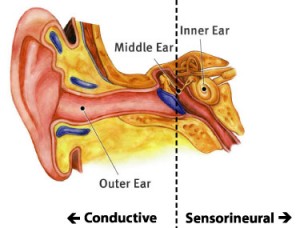Deaf Actress Marlee Matlin is Celebrity Apprentice Finalist

Last night on Celebrity Apprentice, Donald Trump sent Meat Loaf and Lil John packing, leaving actress Marlee Matlin and country crooner John Rich as the finalists. This is just one of many accomplishments in which Matlin has excelled. Having lost her hearing at the age of 18 months (probably from a genetically malformed cochlea), Matlin has become an inspiration for many in the hearing, as well as in the deaf communities. She is the youngest woman and the only deaf actress to win the Academy Award for Best Actress in a Leading Role, which she won at age 21 for Children of a Lesser God. She then wowed people for her dancing abilities on Dancing with the Stars, despite the fact that she couldn’t hear the music. But Matalin’s real goal is to be seen as an accomplished woman- who also just happens to be deaf.
Hearing Loss in Children:
About 2 - 3 infants out of every 1,000 live births will have some degree of hearing loss at birth. Hearing loss can also develop in children who had normal hearing as infants. The loss can occur in one or both ears, and may be mild, moderate, severe, or profound. Profound hearing loss is what most people call deafness.
Some cases of hearing loss are progressive (they get worse over time). Other cases of hearing loss stay stable and do not get worse.
Risk factors for infant hearing loss include:
- Family history of hearing loss
- Infection with some viruses and bacteria
- Low birth weight
- Problems with the structure of the skull bones
There are four types of hearing loss:
 Conductive hearing loss (CHL): results from a problem in the outer or middle ear, such as wax buildup, rupture of the eardrum, or repeated infections. It is usually possible to treat conductive hearing loss with medication or surgery.
Conductive hearing loss (CHL): results from a problem in the outer or middle ear, such as wax buildup, rupture of the eardrum, or repeated infections. It is usually possible to treat conductive hearing loss with medication or surgery.
Causes of conductive hearing loss in infants include:
- Abnormalities in the structure of the ear canal or middle ear
- Buildup of ear wax
- Ear infections (especially repeated infections)
- Foreign objects in the ear
- Injury
- Rupture of the eardrum
- Tumors
Sensorineural hearing loss (SNHL): results from a problem with the inner ear. The inner ear is responsible for sending signals to the auditory (hearing) nerve. There is no cure for sensorineural hearing loss. People with this type of hearing loss may benefit from hearing aids or a cochlear implant.
Causes of sensorineural hearing loss include:
- Exposure to certain toxic chemicals or medications while in the womb or after birth
- Genetic changes or conditions, such as Down syndrome
- Infection before birth, including cytomegalovirus infection, or infection with German measles during the early stages of pregnancy
- Infections after birth, such as bacterial meningitis
- Problems with the structure of the inner ear
Mixed hearing loss: hearing loss that results from a combination of conductive and sensorineural problems. Causes of mixed hearing loss can include any combination of the above SNHL and CHL causes.
Central hearing loss: results from damage to the auditory nerve itself, or the brain pathways that lead to the nerve. Central hearing loss is rare in infants and children.
Causes of central hearing loss include:
- Diseases that affect the protective coating (myelin sheath) around nerve cells
- Tumors
Symptoms
Signs of hearing loss in infants vary by age. For example:
A newborn baby with hearing loss may not startle when a loud noise sounds nearby.
Older infants, who should be responding to familiar voices, may show no reaction when spoken to.
Children should be using single words by 15 months, and simple 2-word sentences by age 2. If they do not reach these milestones, hearing loss since infancy may be the cause.
Some children may not be diagnosed until they are in school. This is true even if they were born with hearing loss. Inattention and falling behind in class work may be the result of an undiagnosed hearing loss problem.
For a more extensive checklist, entitled: Your Baby’s Hearing and Communicative Development Checklist
For more information about hearing disorders, click here to go to the Resounding Health Casebook on the topic.



























0 comments